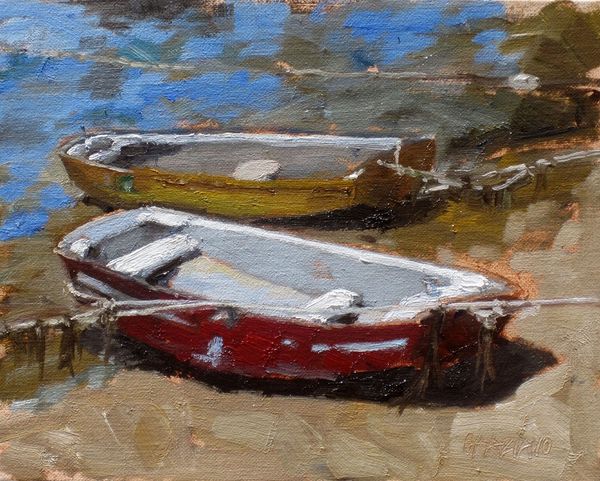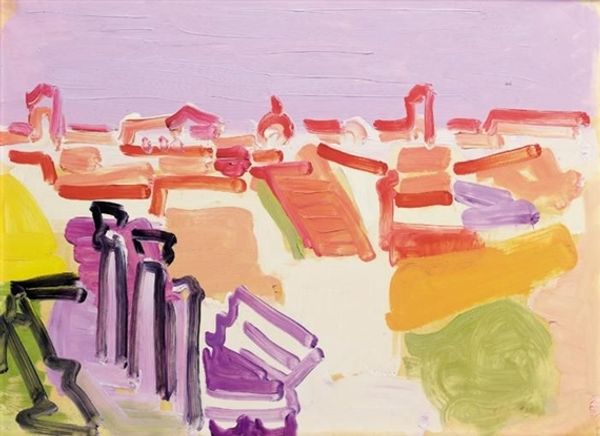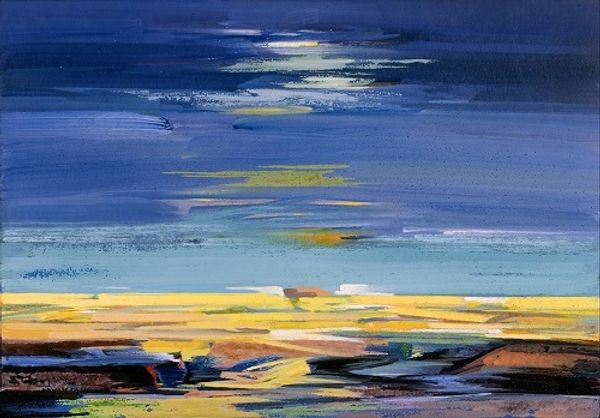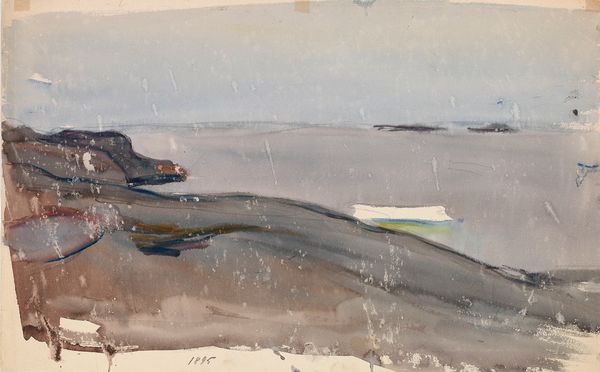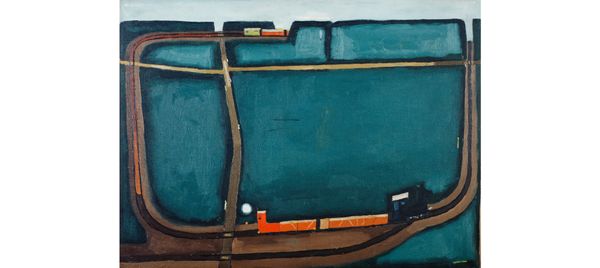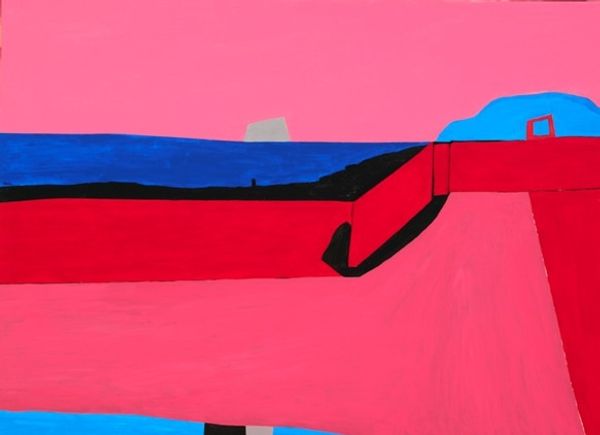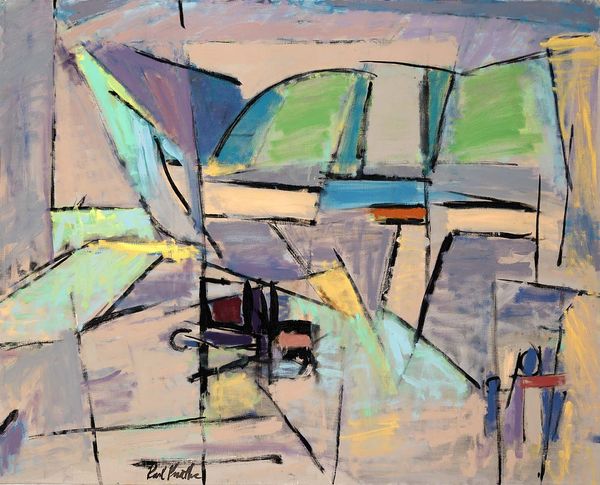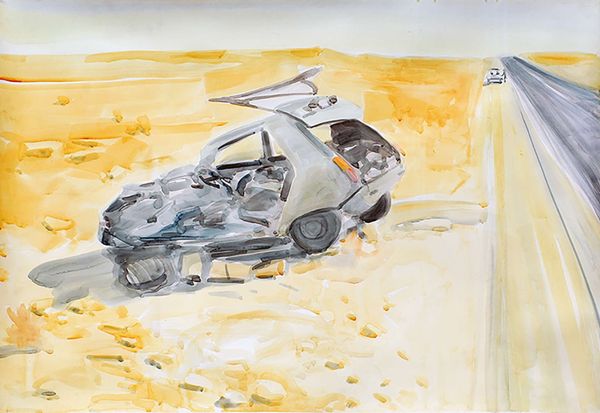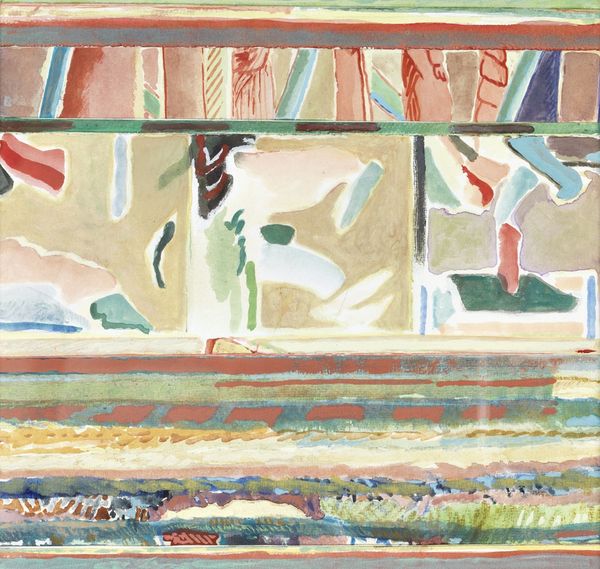
Copyright: Carlos Almaraz,Fair Use
Curator: Here we have Carlos Almaraz’s "Shootout" from 1978, an oil on canvas painting. When you first look at this piece, what strikes you? Editor: Immediately, the dynamic composition grabs attention—the angularity, the vibrant yet somehow slightly unsettling color choices…there is a feeling of naive aggression at play here. Curator: It's fascinating how Almaraz blends an almost childlike simplicity with the tense subject matter. Considering the time and place, we must read it as a commentary on policing and social unrest within Chicano communities in Los Angeles. Editor: Indeed. The fauvist colors jar against the potential violence—that harsh, cerulean blue contrasting with the deep red of the car… it heightens the overall feeling of tension. The lines create angular vehicles almost suspended, giving it a fantastical quality. Curator: Absolutely. Almaraz's work often explores the intersection of identity, place, and sociopolitical issues. Think about the Zoot Suit Riots. How the image of vintage cars and overt policing tap into historical trauma experienced by Chicano populations. The expressionistic handling creates a sense of immediacy and raw emotion, as if ripped from lived experience. Editor: Yes, there is an element of heightened reality—but one also shouldn't dismiss the aesthetic decisions. The lack of detail, almost stylized figures, point toward the artist using expressionist form as a device, emphasizing particular anxieties instead of striving for pure documentation. Note how space and light interact here to create emphasis through compositional devices. Curator: It's about feeling, not photorealism, which speaks to the experience of those caught in such situations. Consider also Almaraz's activism and his involvement in the Chicano art movement. Editor: So in short, Almaraz transforms an ugly reality into something, on the surface at least, not wholly without charm by strategically layering texture, colour, and stylization... quite fascinating. Curator: I agree, its enduring impact reminds us of the ongoing need for dialogue and understanding regarding social justice. Editor: Indeed, analyzing the formal language helps unlock the layered narratives embedded within the image.
Comments
No comments
Be the first to comment and join the conversation on the ultimate creative platform.

